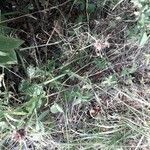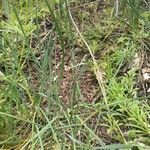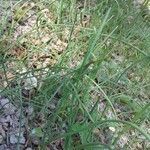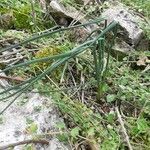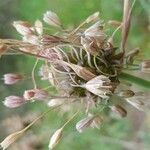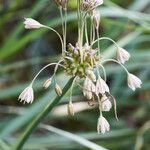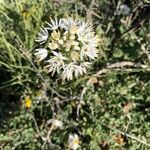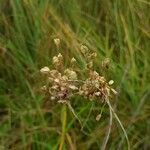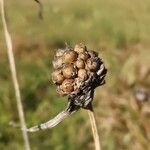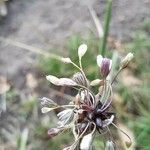Bulbs ovoid-conic, 1–2 cm; stem slender, 3–6 dm; lvs linear, flat, 8–30 cm × 2–4 mm; umbel erect, subtended by 2 elongate linear bracts, bearing a few sessile bulblets and numerous nodding, red-purple or violet fls; stamens usually exsert, the filaments all slender; 2n=32, 40. Native of Europe, rarely adventive in our range.
An onion family plant. A bulb plant. It grows to 60 cm high. Bulbs are 1-2 cm across.
